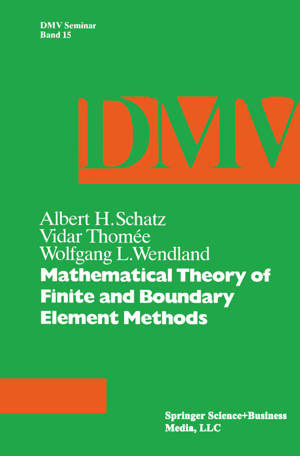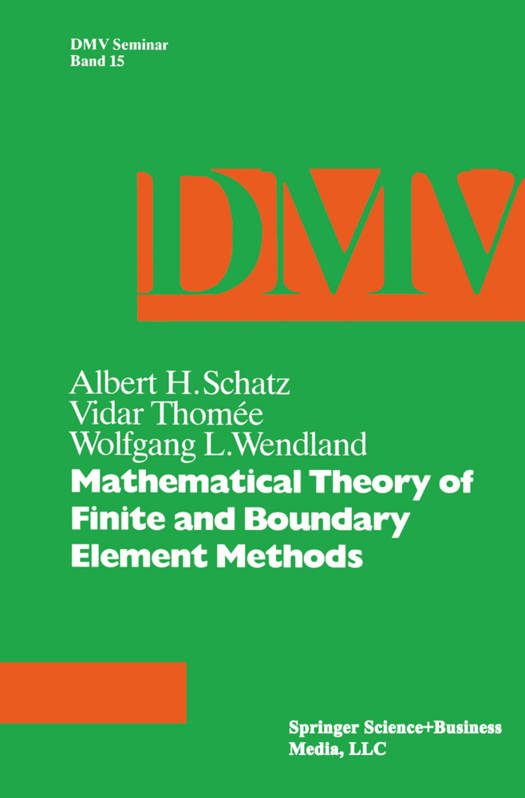
- Afhalen na 1 uur in een winkel met voorraad
- Gratis thuislevering in België vanaf € 30
- Ruim aanbod met 7 miljoen producten
- Afhalen na 1 uur in een winkel met voorraad
- Gratis thuislevering in België vanaf € 30
- Ruim aanbod met 7 miljoen producten
Zoeken
Omschrijving
These are the lecture notes of the seminar "Mathematische Theorie der finiten Element- und Randelementmethoden" organized by the "Deutsche Mathematiker-Vereinigung" and held in Dusseldorf from 07. - 14. of June 1987. Finite element methods and the closely related boundary element methods nowadays belong to the standard routines for the computation of solutions to boundary and initial boundary value problems of partial differential equations with many applications as e.g. in elasticity and thermoelasticity, fluid mechanics, acoustics, electromagnetics, scatter- ing and diffusion. These methods also stimulated the development of corresponding mathematical numerical analysis. I was very happy that A. Schatz and V. Thomee generously joined the adventure of the seminar and not only gave stimulating lectures but also spent so much time for personal discussion with all the participants. The seminar as well as these notes consist of three parts: 1. An Analysis of the Finite Element Method for Second Order Elliptic Boundary Value Problems by A. H. Schatz. II. On Finite Elements for Parabolic Problems by V. Thomee. III. I30undary Element Methods for Elliptic Problems by \V. L. Wendland. The prerequisites for reading this book are basic knowledge in partial differential equations (including pseudo-differential operators) and in numerical analysis. It was not our intention to present a comprehensive account of the research in this field, but rather to give an introduction and overview to the three different topics which shed some light on recent research.
Specificaties
Betrokkenen
- Auteur(s):
- Uitgeverij:
Inhoud
- Aantal bladzijden:
- 268
- Taal:
- Engels
- Reeks:
- Reeksnummer:
- nr. 15
Eigenschappen
- Productcode (EAN):
- 9783764322113
- Verschijningsdatum:
- 1/01/1990
- Uitvoering:
- Paperback
- Formaat:
- Trade paperback (VS)
- Afmetingen:
- 156 mm x 234 mm
- Gewicht:
- 394 g

Alleen bij Standaard Boekhandel
+ 94 punten op je klantenkaart van Standaard Boekhandel
Beoordelingen
We publiceren alleen reviews die voldoen aan de voorwaarden voor reviews. Bekijk onze voorwaarden voor reviews.











